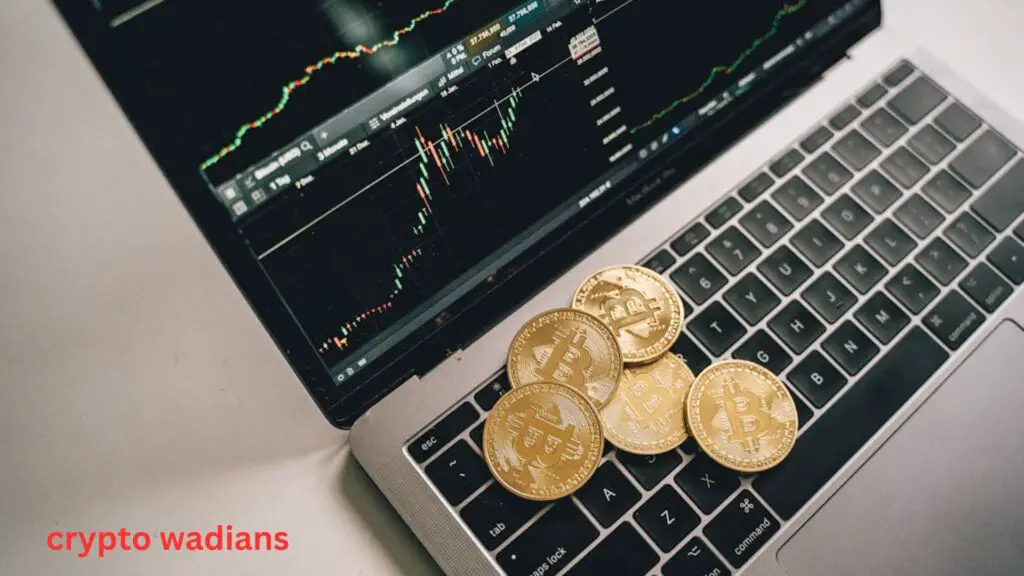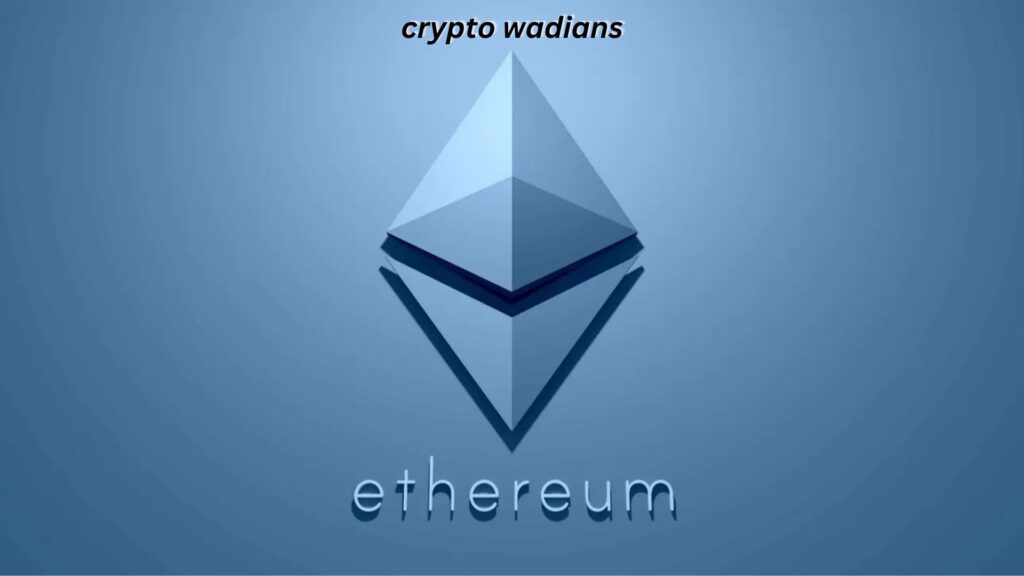What is Ripple (XRP)?
Blockchain technology is used by San Francisco-based fintech startup Ripple to provide a digital payment network and protocol that streamline international financial transactions. Quick processing speeds and cheap transaction costs are provided by the XRP Ledger (XRPL) network. In addition, a number of financial organizations, mostly banks, have partnered with Ripple to use its technologies and link to its payment network.

XRP, the native cryptocurrency of the Ripple network, is frequently ranked among the top 10 digital assets by market capitalization.
The XRP cryptocurrency token was developed to transfer transactions—while minimizing related costs—from central databases run by financial institutions to open platforms.
Founder Of Ripple (XRP)
Because multiple people worked on developing the technology and corporate entities that support XRP, its creation is a little more complicated than that of other cryptocurrencies.
Nevertheless, the XRP Ledger’s development was greatly aided by Arthur Britto, Chris Larsen, and Jed McCaleb, who are sometimes cited as the company’s founders.
Other members of the founding team include Stefan Thomas, the company’s former CTO, and David Schwartz, the company’s current CTO (Chief Technology Officer), who wrote the initial Ripple network whitepaper.
How does Ripple (XRP) Work?
The XRP Ledger is the protocol that makes XRP usable. The developers of the XRP Ledger claim that their novel approach to managing blockchains makes transaction processing more effective.
Anyone can donate computer power, safeguard its software, and validate Bitcoin transactions, for instance, using the Bitcoin blockchain. However, only a little more than 150 privileged network users can contribute to network security and transaction validation using the XRP Ledger. These individuals are referred to as the Unique Node List collectively.
The XRP digital currency now employs a consensus mechanism that incorporates multiple, frequently bank-owned servers to verify and confirm transactions. Additionally, validators cross-reference proposed transactions with the most recent version of the XRP Ledger in order to confirm their legitimacy. A transaction needs to be approved by the majority of validators in order to be considered verified.
Key Features of Ripple (XRP)
Ripple Net
Using distributed financial technology from Ripple, banks and payment providers form the decentralized network known as RippleNet. It facilitates cross-border payments for financial institutions by utilizing blockchain technology. In addition, real-time communications, transaction clearing, and settlement are offered by RippleNet. With the XRP network at its center, RippleNet aims to establish a single, worldwide payment system for traditional finance.

In an effort to offer safe payment solutions, Ripple Net is a rapidly expanding worldwide network that is accessible in more than 55 countries and currently hosts over 120 currency pairings. Low-cost transactions like remittance payments can be settled with it.
RippleNet can be used by anyone to create and distribute virtual currency.
XRP is not required for RippleNet to operate. Its on-demand liquidity service is the only component that makes use of XRP as a bridge currency. Pre-funding can be substituted with RippleNet’s on-demand liquidity service, which is presently offered in the EuroZone, the US, Japan, Australia, the Philippines, Thailand, and Mexico.
Ripple Xpring
This is a new effort from the Ripple network that intends to build the infrastructure required for blockchain startups to grow through partnerships and investments. Say Xpring out loud as “Spring.”
For applications and companies using XRP and XRP Ledger for purposes other than currency exchanges and international transactions, Ripple Xpring was created.
The only objective of Ripple Xpring is to create a community of developers and entrepreneurs who believe the Ripple consensus Ledger can transform various sectors.
Exarpy Wallet
Using the XRP web wallet Exarpy, users can send and receive money from a Ripple warm wallet. You need at least 20 XRP in order to keep your Exarpy wallet active.
With ease, users of ripple can send and receive XRP at a low cost. A transaction fee of 0.025 XRP is charged for each transaction.
The Exarpy Wallet provides medium privacy and personal security. Each account number has a PIN, and the wallet is protected by 2FA. The user’s device contains his private keys, and SSL encryption secures data transfers.
The Ripple network’s user-friendly interface allows users to interact with it right away. There isn’t currently a mobile Exarpy app.
Limitations of Ripple (XRP)
Ripple’s main flaw is that it seems to be centralized. Because XRP defies the decentralization principle, many prospective investors do not think it is a legitimate cryptocurrency.
The main goal of cryptocurrencies is to dethrone governments and banks through their decentralized structure, but Ripple doesn’t appear to be accomplishing that. Rather, XRP was created expressly for the financial sector and to address issues that arise there. Some investors claim that because of this, XRP is more vulnerable to censorship than other cryptocurrencies.
The fact that Ripple Labs holds a sizable portion of XRP presents another issue. But what most people don’t realize is that nearly all of Ripple’s XRP holdings are placed in escrow accounts, which are meant to protect the XRP payment system and the XRP Ledger.
Additionally, there is a substantial supply of XRP that has already been pre-mined, and it is still unclear when Ripple plans to put the substantial amount of XRP that has been kept in escrow into circulation. This has made it difficult to track XRP’s value. Furthermore, the value of XRP may suffer if the hoarded supply is released prematurely.
How is Ripple (XRP) Created?
XRP was pre-mined, in contrast to several other cryptocurrencies like Ethereum and Bitcoin. This indicates that 100 billion units have already been produced by the XRP Ledger and will be progressively distributed to the general population. The fact that there can never be more digital currency than those that were pre-mined makes XRP a valuable deflationary asset over time.
A large amount of the XRP currencies in use are owned by Ripple Labs, which incentivizes the business to support the asset’s long-term growth. The remaining share of XRP is held in reserve and will be sold to the market at specific intervals.
In the cryptocurrency world, there is worry that this strategy could result in the simultaneous release of large amounts of XRP, which would reduce the value of the currencies that are now in circulation. Ripple, however, employs a number of strategies, including as adhering to a consistent release schedule and winning over users’ confidence, to allay concerns about this kind of instability.
Which Blockchain does Ripple (XRP) Use?
The XRP coin is powered by the XRP Ledger blockchain. The blockchain was designed by Arthur Britto, David Schwartz, and Jeb McCaleb. Britto and McCaleb, the two primary developers of Ripple, employ XRP to facilitate transactions on the network. Jed McCaleb also developed Stellar Lumens.
How to Use Ripple (XRP)
Like all other cryptocurrencies, XRP can be used for investments as well as transactions. It makes value transfers across nations easy and provides a quick, reliable, and cost-effective solution.
On the Ripple platform, XRP can be used to exchange currencies. You can trade your euros for XRP first, then use the XRP to buy US dollars if you wish to convert your euros for US dollars. When compared to using traditional financial institutions like banks or even the Bitcoin network, this XRP trading method is far faster and less expensive.
XRP serves as an intermediary currency and can also be used as an alternative to conventional wire payments. With XRP, international transactions are more reasonably priced.
By using XRP, you can reduce the amount of liquidity required in Nostro accounts to conduct foreign payments and find liquidity on demand.
XRP can also be bought as an investment on a cryptocurrency market and held for a predefined amount of time. Typically, investors buy XRP below market value and resell it for more than they paid. While some investors are able to keep onto XRP for longer than others, some would rather HODL for a shorter amount of time.
How to Buy Ripple (XRP)?
Exchanges such as eToro, Bithumb, Uphold, Pionex, Bitrue, Huobi Global, Binance, Bitstamp, and Kraken allow you to buy XRP. Another way to view a list of all the exchanges that support XRP is to visit CoinMarketCap.

The procedure for purchasing XRP is straightforward, regardless of the exchange you decide to use.
If you haven’t already, register for an account on your chosen exchange before you may begin purchasing XRP.
Make sure you research potential exchanges thoroughly before selecting one. Whichever exchange you select, make sure to verify important features like trading costs and security.
How to Store Ripple (XRP)?
XRP can be kept in a variety of wallet kinds. You can keep and manage your XRP whenever it’s convenient for you with a wallet. The three main wallet kinds that you can use to store XRP are listed below.
Hardware Wallets
The safest wallets on the market for holding cryptocurrency of any kind are these ones. Hardware components known as cold wallets, or hardware wallets, allow for offline cryptocurrency storage. A safe method to store digital assets that is not susceptible to hacking attacks is with a hardware wallet.
Because hardware wallets are not internet-connected, they are less susceptible to malicious assaults.
The owner of the wallet is still in charge of ensuring that the recovery phrase is stored securely. because if the wallet ends up in the wrong hands, the thief can access the valuables stored inside.
Currency Exchange Wallets
Wallets for exchanging currencies are those seen on websites that trade digital assets. Wallets that facilitate the storing of XRP are available on the majority of exchanges that facilitate its trade.
You don’t have to worry about keeping your recovery phrases safe if you’re using a currency exchange wallet—the platform will take care of it.

You must use caution even if this could be a convenient alternative. Wallets on exchanges are not infallible. You must use two-factor authentication (2FA) and a password to prevent theft of your wallet.
It’s important to keep in mind that passwords and 2FA will only protect your money from certain account hacks. If the exchange’s backend is breached, the hackers will have access to every wallet on the network, negating the effectiveness of your security.
Exchange wallets are ideal for storing little quantities of XRP or XRP that you wish to trade regularly. Keeping large sums of money in exchange wallets is not advised.\
what is NFT



